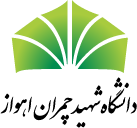صفحه اعضا هیئت علمی - دانشکده مهندسی آب و محیط زیست

Associate Professor
Update: 2025-05-08
Parvaneh Tishehzan
دانشكده مهندسی آب و محیط زیست / گروه مهندسی محیط زیست
Master Theses
-
بررسی آگاهی بخشی دانش آموزان نسبت به آلودگی میكروپلاستیك ها (مطالعه موردی: دانش آموزان پسر مقطع متوسطه اول غرب اهواز)
احمد ساكی 1403 -
ارزیابی توانایی گیاه لاله ی مردابی در کاهش CODاز فاضلاب مصنوعی
فاطمه باب گپی 1402 -
شبیه سازی فرایند فیلتراسیون در حذف برخی آلاینده های فاضلاب
سلیمان كشاورز 1402 -
ارزیابی ردپای آب در تولید محصول پلی اتیلن سبک خطی (مطالعه موردی:شرکت پتروشیمی امیرکبیر)
صادق معاوی 1401 -
ارزیابی و پهنه بندی كیفی آب تالاب شادگان با شاخص IRWQI و NSFWQI با استفاده از GIS
ارمغان استكی 1401 -
ارزیابی توانایی گیاه نیلوفر آبی(Nymphaea)در کاهش COD از فاضلاب مصنوعی
زهرا قاسمی ارزنانی 1401 -
بررسی اثر فیلترهای سرباره صنایع فولاد و بیوچارباگاس نیشکر بر کاهش COD آب خاکستری
مصطفی جهانگیرفر 1401 -
بررسی کارایی فرآیند های بایوفتوفنتون و الکتروفتوفنتون جهت کاهش اکسیژن خواهی شیمیایی (COD) از محلول آبی سنتتیک
محمد ارین نسب 1401 -
بررسی آسیب پذیری آبخوان دشت دهاقان بر اساس غلظت نیترات با استفاده از مدل های جنگل تصادفی و ماشین بردار پشتیبان
رضا جلالی 1401 -
گندزدایی آب خاکستری توسط فرایند اکسیداسیون پیشرفته در نور مرئی به کمک نانو ذرات سیلور وانادات
ایمان دلاوری 1399 -
بهینه سازی حذف سرب از محلول آبی با استفاده از رویکرد تاگوچی با جاذب بنتونیت اصلاح شده بارگذاری شده با کیتوسان
فروغ زیبایی نسب 1399 -
بررسی کارایی فرایند فتوالکتروفنتون جهت کاهش اکسیژن خواهی شیمیایی (COD) از پساب های واحد نمک زدایی صنعت نفت
فاطمه اعتمادی اصل 1398 -
بررسی کارایی فیلتراسیون عمودی در حذف فسفر از زهاب در بارگذاری های مختلف با استفاده از سرباره صنایع ذوب فولاد
سحر بحیرایی 1398 -
بررسی اثر احداث سد گتوند بر شاخص های کیفی آب و تخمین میزان نمک ورودی از سازند گچساران به مخزن سد گتوند
بیتا غلامی تقی زاده 1397 -
بررسی کارایی سرباره فولاد در حذف فسفر از زهاب کشاورزی و تعیین ایزوترم و سنتیک جذب
مهسا محمدمغربی 1397 -
بررسی کارایی لجن تصفیه خانه آب درحذف فسفات از محلول آبی
افسانه خدادادی آرپناهی 1397 -
حذف کدورت آب به کمک منعقدکننده طبیعی دانه مورینگا اولیفرا
منیر ناصری 1397 -
تحلیل سامانمند مدیریت پسماند جامد شهری با رویکرد ارزیابی چرخه حیات (مطالعه موردی: شهر دزفول)
مریم رودبالی 1396The complications of non-sanitary disposal and recycling of waste materials have become evident with the increase in population and development of urbanization and changing patterns of utilization and the widespread use of materials that are not easily decomposed. In this sense, in addition to manage the waste in a way that has the least risk for human health, must also respond to the wider needs of today's societies, which the most important terms are environmental sustainability , reuse and economic returns.
To carry out this project, the required information was provided by the municipality of Dezful, the Khuzestan Statistical and Metrological Organizations, field surveys, and the study of relevant guidelines and instructions and numerous books and articles. Using the Life Cycle Assessment (LCA) approach and IWM-2.0.6 software, methods of municipal solid waste management assessment in Dezful , impact and consequences of waste disposal options assessment has done. The studied area included the city of Dezful and some nearby towns which have common landfills with the city of Dezful. Therefore, five waste management scenarios were defined. The first scenario included only the burial option (current state); the second scenario included recycling, composting and burying options; the third, included recycling, anaerobic digestion and burial; the fourth scenario included recycle, compost, incineration with energy recovery and burial and last scenario was just like the previous scenario with the planning horizon amount of waste. The five impact groups included the resource depletion, greenhouse gases, acid gases, smog precursors and toxic emissions. An indicator parameter for each of these impacts was defined and weighted (with The MET method) so the ecological index for each scenario was obtained.
The results indicated that scenario 5 had the best performance in terms of resource depletion, smog precursors and toxic emissions. The forth Scenario in greenhouse gas emissions was the best-performing scenario and the best-performing scenario for acidic gases was the first scenario. In general, Scenario 1 had the largest and the scenario-5 had the smallest ecological indicator. In fact, scenario 5 imposed the least burden on the environment and showed the best performance. In Scenario 4, Scenario 3, Scenario 2 and Scenario 1, weaker performance was observed, respectively. According to the results, the burial option had the greatest environmental impact and should be selected as the last priority.
-
حذف فتوکاتالیستی کادمیوم از محلول های آبی با استفاده از پودر کربن فعال مغناطیسی شده با نانو ذرات اکسید آهن
ایوب یوسف وند 1395Due to its low cost, simplicity and speed of separation and high efficiency, The magnetic separation method widely used to remove contaminants and to solve the problems of the environment. The aim of this study was synthesis of magnetic activated carbon by Fe3O4 and investigating its efficiency in adsorption of Cadmium from aqueous solutions. Magnetic adsorbent prepared by the method of sequestration and physical characteristics and structure of synthesized absorbent were determined by XRD, SEM and TEM. To remove the Cadmium and Lead from aqueous solutions, the Box-behnken design (BBD) of response surface methodology (RSM) was employed for optimizing all parameters affecting the adsorption process. The studied parameters were pH(5-9), temperature (25-45 0C) and the amount of adsorbent (0.5-2 g). 15 experimental runs were calculated by using BBD. Also UVC lamp with power 8w was used for photocatalytic process.
The optimal condition for removal Cadmium by synthesis of magnetic activated carbon by Fe3O4 nanoparticles were pH=7, 450C temperature and The 2 g of adsorbent .Syntactic analysis indicated that the adsorption of cadmium is consistent with the syntactic model for second-order adsorption and showed the optimal time was15 min. The maximum percentage of cadmium removed after 90 min was 95.12%. The adsorption isotherm was well fitted to Longmire model. The study showed that magnetic activated carbon has a high potential for Remove cadmium. Therefore, it is believed that magnetized active carbon by keeping its physical and surface properties could be a suitable method to solve some related problems includingseparation and filtration.
